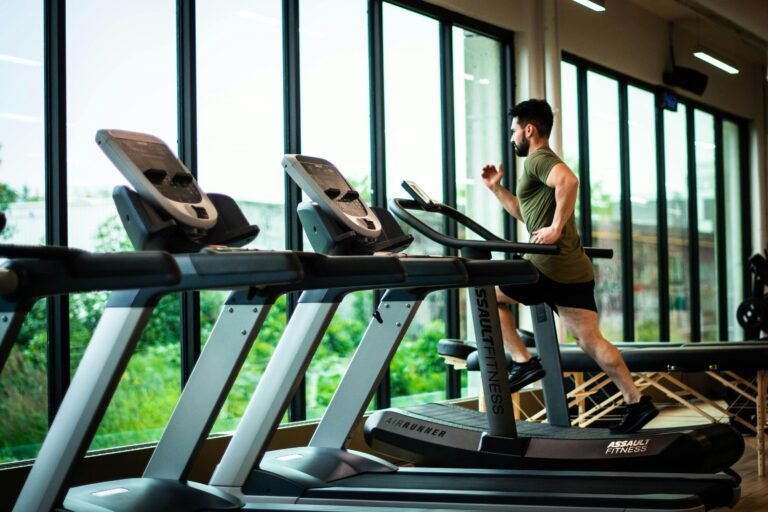9 Powerful Strategies for Enhanced Physical Fitness in US Schools and Homes
- Introduction
- The Importance of Physical Fitness in US Schools and Homes
- Incorporating Physical Education in School Curriculum
- Creating Active Classroom Environments. Physical Fitness in US Schools and Homes
- Brain Breaks and Movement Activities. Physical Fitness in US Schools and Homes
- Promoting Active Transportation. Physical Fitness in US Schools and Homes
- Encouraging Family Physical Activities. Physical Fitness in US Schools and Homes
- Implementing Healthy School Lunch Programs. Physical Fitness in US Schools and Homes
- Leveraging Technology for Fitness Tracking. Physical Fitness in US Schools and Homes
- Collaboration Between Schools and Community. Physical Fitness in US Schools and Homes
- Conclusion
- FAQs
Introduction
The battle for true well-being among today’s Physical Fitness in US Schools and Homes—mentors, teachers, and networks creating the conditions in which children thrive and learn. Understanding the immediate function of true well-being is the most crucial step toward active, strong children ready to succeed. This requires a multidisciplinary approach that consistently integrates wellness into everyday existence. The accompanying 7 methods for schools as well as home situations promote true well-being and its profound benefits. We should jump into a far-reaching guide to actual health upgrades at the most developmental points of a young person’s life. 9 Powerful Strategies for Enhanced Physical Fitness in US Schools and Homes
The Importance of Physical Fitness in US Schools and Homes

With stable lifestyles and growing patterns of youthful vigor, recognizing the allure of true fitness in youth is key. Upgraded real fitness isn’t just about fighting weight, which affects 1 in 5 teenagers in America; it’s also about building endurance, strength, and confidence. It plays an important role in children’s mental capacity, academic performance, and general well-being. These 7 methods are complex ideas. They are the basic building blocks of a good lifestyle for our youth. 9 Powerful Strategies for Enhanced Physical Fitness in US Schools and Homes
Incorporating Physical Education in School Curriculum
Authentic instruction (PE) programs can potentially transform school experiences, primarily because they make development part of the everyday teaching process. Research reliably demonstrates the mental and physical benefits of moderate activity. Now is the right time to incorporate health into the daily plan as a choice and necessity.
Studies show that active work improves the brain’s ability to support memory and focus. PE fosters an inclusive culture of well-being, where learners learn about their well-being and sustenance, cooperation, sportsmanship, and moral responsibility. 9 Powerful Strategies for Enhanced Physical Fitness in US Schools and Homes
One way to guarantee kids get the active work they need is to make practice breaks a regular part of the school day. Core exercises such as yoga, stretching, or walking around a structure can restore the mind and body.
Experts in youth improvement and actual training advocate advancing studied well-being as a primary variable for mixing activities into daily schedules. Dr. Lara Handling, a pediatric clinician, highlights the importance of general functional work in developing a child’s true well-being and improving their core strength. 9 Powerful Strategies for Enhanced Physical Fitness in US Schools and Homes
He observed that “when youth participate in daily exercise, they are better prepared to cope with stress, show less conduct problems, and have a greater quality of life through presentation.” They have a better perspective.” In addition, a division from the CDC recommends that actual work meetings work on understudies’ determination, consideration, and study hall conduct, indicating that exercise benefits the psyche and the body. Also valuable. Incorporating these master bits of knowledge into school and home schedules can help children deal with fitness more compellingly and draw fit. 9 Powerful Strategies for Enhanced Physical Fitness in US Schools and Homes
Creating Active Classroom Environments. Physical Fitness in US Schools and Homes

Traditional homeroom arrangements can be changed to empower maximum growth. The point is to make every piece of the day a potential activity meeting.
Standing workstations and other adaptive guest plans allow youngsters to sit, stand, or even influence, which can drastically reduce the time they spend stationary. 9 Powerful Strategies for Enhanced Physical Fitness in US Schools and Homes
A proof-of-concept group is developing supporting standing work areas and adaptive seating in study halls. Dr. Naomi Smith, a leading ergonomics expert, emphasizes their ability to “reduce distractions and increase the digestion of understudies, which can lead to better determination and increased academic performance.” In a review directed by the Ergonomics Place at Cornell College, scientists found that allowing young people to switch back and forth between sitting and standing prevented extra muscular problems and increased their determination and comfort. It can help with grading. 9 Powerful Strategies for Enhanced Physical Fitness in US Schools and Homes
Dr. Smith’s view is echoed by teachers who have seen the impact of adaptive seating themselves. Mr. John Keller, a grade school head with over 10 years of involvement, described a “detectable improvement in understudy communication and a dramatic reduction in off-task behavior” since implementing standing work areas. Is. His feedback suggests that when learners are not confined to traditional work areas, their tendency to move regularly encourages a more dynamic and collaborative learning environment. 9 Powerful Strategies for Enhanced Physical Fitness in US Schools and Homes
With master surveys emphasizing the benefits of standing workstations and adaptive seating, it’s clear that these imaginative home room plan decisions can contribute to promoting active work and well-being among educated people in general. Integrating these findings into a school foundation is an essential step in the right direction for improving the teaching experience through improved real-world fitness. 9 Powerful Strategies for Enhanced Physical Fitness in US Schools and Homes
Brain Breaks and Movement Activities. Physical Fitness in US Schools and Homes
A 5-minute break between classes, known as a mental break, can empower blood flow and stay centered. These breaks can be as essential as moving into a favorite rhythm or exhibiting a quick yoga succession.
The idea of brain breaks and developmental exercises during school hours has received inspiring consideration from training and health experts. Dr. Kimberly Oliver, a youth wellness expert, explains the viability of these methods: “Cerebrum restores the brain by approaching traditional learning strategies. At a point when less studies are really stimulating. are, even momentarily, it can fundamentally enhance their cognitive abilities.” In a wide-ranging meta-examination published in the “Global Journal of Social Nutrition and Real Work,” scientists looked at home-based active tasks.
Found an immediate connection between and worked on cognitive processes, thinking, and behavior.
Also, Carolyn Patterson, a carefully trained educator with extensive involvement in integrating development into her homeroom, reports positive changes in the energy levels of her students. “Increasingly, structured breaks for growth have transformed my study hall. Understudies return to their assignments, more engaged and ready to learn,” she says. By effectively engaging students in guided developmental exercises, teachers create more energetic atmospheres in the homeroom that promote learning and well-being. 9 Powerful Strategies for Enhanced Physical Fitness in US Schools and Homes.
More: 10 Genius Ways to Inspire Picky Eaters to Embrace New Foods
Promoting Active Transportation. Physical Fitness in US Schools and Homes

Empowering children to walk or cycle to school can have the dual benefit of expanding real work and reducing gridlock.
Walking groups or cycling school trips in the local area show that foley, group action, and child safety practices are fundamental to development.
Interest in safe, pedestrian-friendly courses for schools makes active transportation plausible and safe to land. This often involves close collaboration with nearby metropolitan preparedness and well-being campaigns. 9 Powerful Strategies for Enhanced Physical Fitness in US Schools and Homes
Encouraging Family Physical Activities. Physical Fitness in US Schools and Homes
Families that stick together stick together. Empowerment exercises that involve the whole family can create sustainable trends.
Putting together family sports events at neighborhood parks can add dynamic appeal. Soccer, ball, and tag can build bonds and memories while burning calories.
In addition to common sports, families can investigate less traditional activities, for example, frisbee golf, catch a banner, or custom-made courses for different ages. These choices consider different abilities and interests while enlivening the daily process, guaranteeing that all relatives can participate and participate together. 9 Powerful Strategies for Enhanced Physical Fitness in US Schools and Homes
Participating in the local area-supported games can also increase the family’s commitment to active work and provide an opportunity to socialize with others. Consistency in these practices, regardless of type, is essential to building a more grounded, better nuclear family and appreciating deeper roots for true well-being.
Setting month-to-month fitness challenges, like who can log the most miles on a jog or run, can turn exercise into tomfoolery, a serious game. A reward for accomplishing these can be something the family participates in together, such as a movie night with solid news. 9 Powerful Strategies for Enhanced Physical Fitness in US Schools and Homes
Implementing Healthy School Lunch Programs. Physical Fitness in US Schools and Homes

Legitimate parenting is as important as work to a young person’s health. School lunch programs play an immediate role in building intelligent dieting trends.
Schools can give youth the essential supplements they need to get through the day by offering a variety of organic produce, vegetables, and whole grains.
Consideration of nutritious snack choices in schools has drawn praise from nutritionists and child welfare advocates. Renowned nutritionist Dr. Angela Robbins highlights the importance of such projects: “Schools are in a new situation that affects children’s eating patterns. 9 Powerful Strategies for Enhanced Physical Fitness in US Schools and Homes
Varied, nutritious meals promote better learning and long-term well-being.” A Harvard School of General Well-being review supports this, showing that eating breakfast improves memory. , increases concentration and learning abilities. Additionally, the USDA reports that balanced school lunch projects can play an essential role in combating youth weight by providing better options than calorie-dense, unhealthy options. Satisfy food choices. 9 Powerful Strategies for Enhanced Physical Fitness in US Schools and Homes
In addition, gourmet expert and anti-foodist Jamie Oliver has had a similar take on the subject, emphasizing the potential of school feasts to shape future dietary patterns: “Kids start Teaching about great nutrition from, and including them all the time can be motivating. An age at which they are more mindful of what they eat and passionate about maintaining proper eating routines. are.” Thus, experts suggest that active collaboration between dietitians, culinary experts, teachers, and mentors is critical in creating and supporting fruitful, delicious, and nutritious school lunch drives. Physical Fitness in US Schools and Homes
Banning access to processed food sources and drinks loaded with useless calories is a massive step toward fighting youth empowerment and promoting better decisions. 9 Powerful Strategies for Enhanced Physical Fitness in US Schools and Homes
Leveraging Technology for Fitness Tracking. Physical Fitness in US Schools and Homes

In the age of cell phones and smartwatches, innovation can be a companion to true wellness. Various gadgets and applications make tracking and monitoring individual well-being available and, at times, enjoyable.
There are various applications and wearables accessible that can track progress, assess pulse, and make exercises as easy as a couple of swipes or taps.
Fitness trackers often work in games or competitions, turning every step into an opportunity to win and make practice a truly engaging competition. 9 Powerful Strategies for Enhanced Physical Fitness in US Schools and Homes
Collaboration Between Schools and Community. Physical Fitness in US Schools and Homes
Solid kids need sound networks, and collaborating to deliver lasting trends is their profession.
Schools can partner with nearby rec centers, gyms, or even colleges to provide understudies with additional open doors for wellness instruction and exercise.
Providing people with group-wide opportunities and work schedules can drive performance and lead to a culture of respect and well-being. 9 Powerful Strategies for Enhanced Physical Fitness in US Schools and Homes
Conclusion
The above 9 methods do not shape or form the primary courses for upgrading actual fitness among children, yet they address a balanced process that records different settings and partners. By incorporating true wellness into the fabric of our organizations and homes, we are preparing for an age focused on happiness and health. The benefits are clear – in great shape, children become mentally strong adults better prepared to handle life’s challenges. 9 Powerful Strategies for Enhanced Physical Fitness in US Schools and Homes
In America, schools and homes have a unique opportunity to team up and guarantee that our children are afforded every opportunity to be fit and healthy. The ideal chance of activism is now, and by applying these techniques, we can guarantee that our youth will lead the bleeding edge in building a more grounded, better future. 9 Powerful Strategies for Enhanced Physical Fitness in US Schools and Homes
FAQs
What are the 9 powerful strategies for enhancing physical fitness in schools and homes?
This FAQ would outline each of the nine strategies, providing a brief overview of what they entail and how they contribute to improved physical fitness. Physical Fitness in US Schools and Homes
How can these strategies be implemented in a typical school setting?
Here, you can examine useful strides for integrating these wellness techniques into the day to day daily practice of schools, taking into account factors like time, space, and assets. Physical Fitness in US Schools and Homes
What role can parents play in supporting these physical fitness strategies at home?
This segment would zero in on how guardians can empower and take part in actual wellness exercises with their youngsters, establishing a steady home climate. Physical Fitness in US Schools and Homes
Are these strategies suitable for children of all ages?
Address how these procedures can be adjusted for various age gatherings, guaranteeing they are protected and powerful for kids at different formative stages. Physical Fitness in US Schools and Homes
How do these strategies benefit the overall health and well-being of children?
Examine the physical, mental, and profound advantages of ordinary actual work for kids, accentuating the significance of these systems. Physical Fitness in US Schools and Homes
What if schools or homes lack the resources for elaborate fitness programs?
Give ideas for minimal expense or no-cost ways of carrying out these techniques, guaranteeing availability for every financial foundation. Physical Fitness in US Schools and Homes
How can schools and parents measure the effectiveness of these fitness strategies?
Recommend techniques for following advancement and surveying the effect of these systems on kids’ wellness levels and by and large wellbeing.. Physical Fitness in US Schools and Homes
Can these strategies be integrated with academic learning?
Investigate ways of joining actual work with instructive substance, for example, integrating development into illustration plans or utilizing dynamic games to show scholastic ideas. Physical Fitness in US Schools and Homes
How can children be motivated to participate regularly in these activities?
Give tips to making actual work fun and connecting with, guaranteeing that youngsters are inspired to reliably take an interest. Physical Fitness in US Schools and Homes
What should be done if a child is reluctant or unable to participate in certain activities?
Talk about elective exercises and transformations to oblige various capacities and interests, guaranteeing that all youngsters can be incorporated. Physical Fitness in US Schools and Homes






